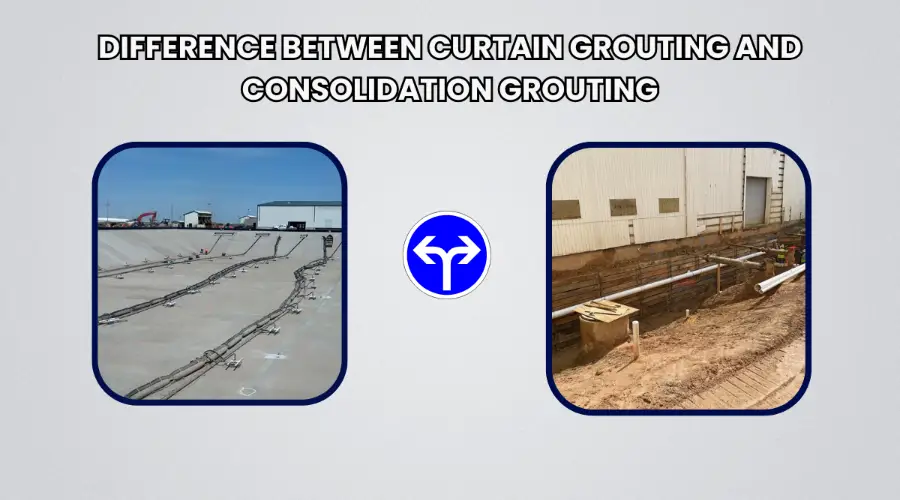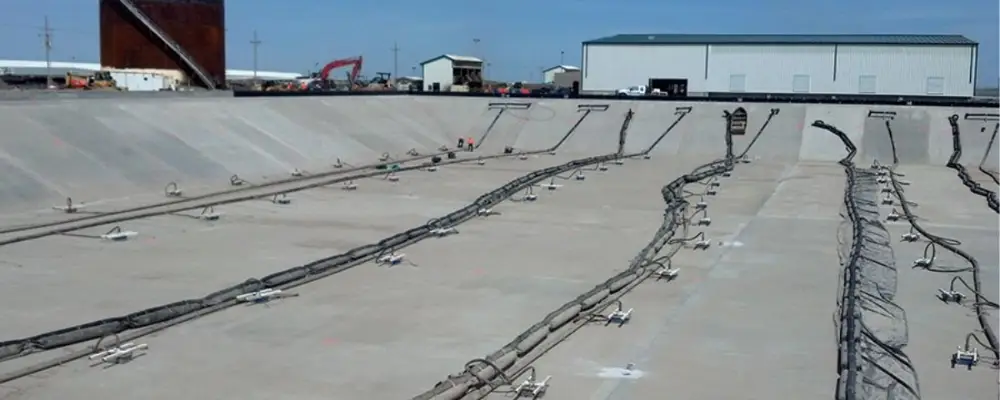Any construction building requires periodic refurbishment to increase the structure’s longevity. Various steps and processes exist to refurbish and resuscitate the structural integrity and load-bearing capacity. One of them is grouting. Grouting involves the injection of a fluid-like material into gaps, voids, or spaces in the structures. The grouting is done both in the initial stage of construction and after wear and tear to improve the strength or rigidity. There are various types of grouting practiced in the construction industry. This article will discuss curtain grouting. The diverse geological landscape has necessitated the inclusion of curtain grouting. This increases the safety and durability of structures. This article will give a brief description of curtain grouting, its working process, applications, advantages, and disadvantages.
What is Curtain Grouting?
The curtain grouting involves the injection of grout materials into the ground. This creates an impermeable barrier, which is known as a curtain grout. In construction projects, there is always a chance of the development of pores or fractures. This infused grout will act like a curtain and obstruct the flow of water through such gaps. This curtain grout mitigates the seepage issues that arise at any point in time. In our country, the curtain grout is highly used in dam projects. In the construction of dam projects, the curtain grout addresses the seepage concerns and reinforces a solid foundation. Recognising its significance in structures like dams, the Bureau of Indian Standards has provided official guidelines for the design of curtain grout.
How Curtain Grouting Works?
The core principle behind curtain grouting is targeted grout injection. This creates a continuous impermeable barrier that prevents water seepage through porous openings, fractured soil, and rock formations. Precise planning is much needed to ensure that grout reaches every nook and corner to form a watertight curtain. The process begins with an introspection of permeability to determine the level of seepage. This gives us clarity on the need for grout material and injection parameters. Based on site conditions, suitable materials are chosen. Under controlled pressure, the grout is injected into the voids. It is the high-pressure injection that ensures the grout is spread to every nook and corner. After some time, the injected grout turns out to be a hardened curtain-like structure.
Application of Curtain Grouting
Curtain grouting is extensively used in the construction industries. Below are some of the common applications of curtain grout,
- Curtain grout plays an indispensable role in the construction of dams. It prevents seepage through foundations and abutments. This in turn increases the stability of the structure.
- Next to dam construction, curtain grout is used largely in tunnel construction. It is used to seal the water seepage in water-bearing strata by creating a watertight barrier. This creates safe and dry working conditions for the construction project.
- It is even used in preventing contaminants from passing through groundwater. This safeguards the environment.
- In small construction projects, it is used to reinforce foundations and control groundwater entry into basements.
- Advantages of Curtain Grouting
- In various geological conditions, curtain grouting stands out to be a one-stop solution to prevent water seepage.
- It also helps in consolidating the foundation materials, increasing the stability and structure’s longevity.
- Its applicability ranges from large projects such as dam construction to small projects such as urban construction.
Disadvantages of Curtain Grouting
- The specialised equipment and materials used spike the amount of expenditure for the project.
- The intricacy of the process requires skilled personnel to handle the entire process.
- Improper injection or usage of material can cause environmental impacts such as groundwater contamination.
Step-by-Step Curtain Grouting Process
- Detailed planning should be laid out after site investigations. Following this, the appropriate selection of grout material and determination of injection parameters concerning the site is necessary.
- Drilling is the next step following the instructions laid out in the design specification. This ensures alignment and depth accuracy.
- Preparation of grout mixtures is carried out considering factors like viscosity, setting time, and depth accuracy.
- Inject the prepared grout mixture under controlled pressure. The controlled pressure is to ensure the flow rate and proper distribution of the material.
- The infected mixture is allowed to cure for some time. This forms the curtain-like structure preventing any form of seepages.
What is the Difference Between Curtain Grouting and Consolidation Grouting?

| Curtain Grouting | Consolidation Grouting |
| In this type, grouting is formed with the process of injecting grout into the ground. | In this type, the ground is strengthened and solidified by filling the void with grout. |
| The main purpose of curtain grout is to prevent water seepage. | Here, the main purpose is to improve the strength, stability, and load-bearing capacity of soil. |
| Some of the common applications are in dam construction, underground tunnels and many other applications. | It is used in building foundations, slopes, and stabilisation projects. |
| The pattern of curtain grouting is continuous | The pattern of consolidation grout is more specific to the weak zone. |
Conclusion
In conclusion, curtain grouting is an important technique in modern construction, especially for projects that are faced with adverse geological conditions. It prevents the seepage of water through the ground and, therefore, enhances the stability and longevity of structures. It is applied to a wide range of projects, from large dams and tunnels to smaller undertakings. While curtain grouting offers huge advantages in the form of control over water and reinforcement of foundation, it does pose some significant drawbacks, such as, expensive specialised equipment and skilled labour, besides careful planning and execution to avoid possible environmental impacts such as water contamination. Still, with effective application and constant innovation in grouting materials and technology, curtain grouting will remain an indispensable tool for the safety and success of numerous construction ventures across different geologies.
FAQs
While the effectiveness of grouting is determined by the specific application and environmental factors, some of the highly preferred grouting materials in the construction industry are epoxy grout, cementitious grout, and curtain grout.
The main purpose of grouting is to fill gaps, provide structural support, seal, aesthetic appeal and increase durability.
Grouting size plays a critical role in the overall design. It is important to choose a suitable size based on tile type and layout. Different sizes are,
· Narrow – 1 to 2 mm
· Standard – 3 to 5 mm
· Wide – 6mm and above.

